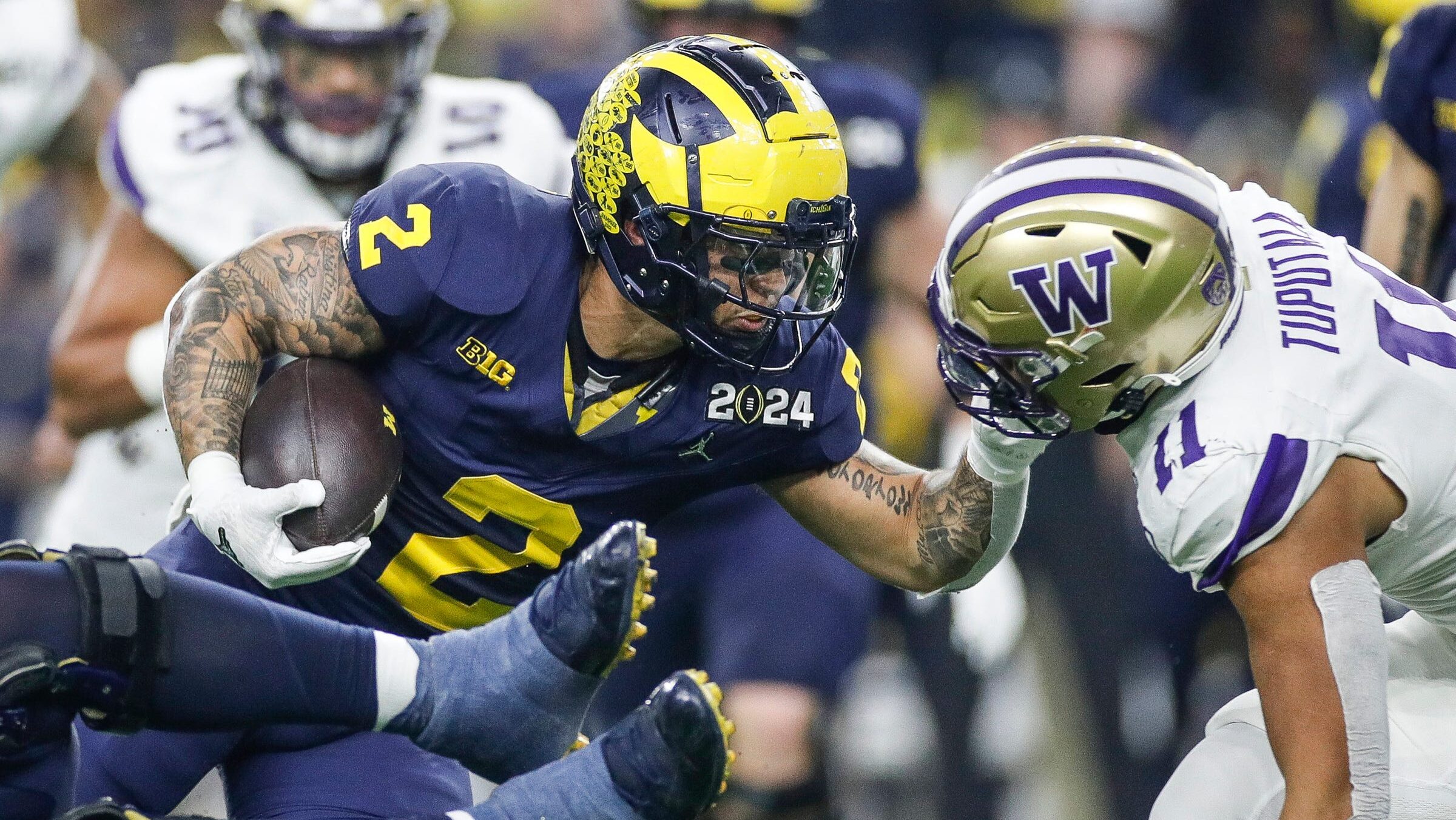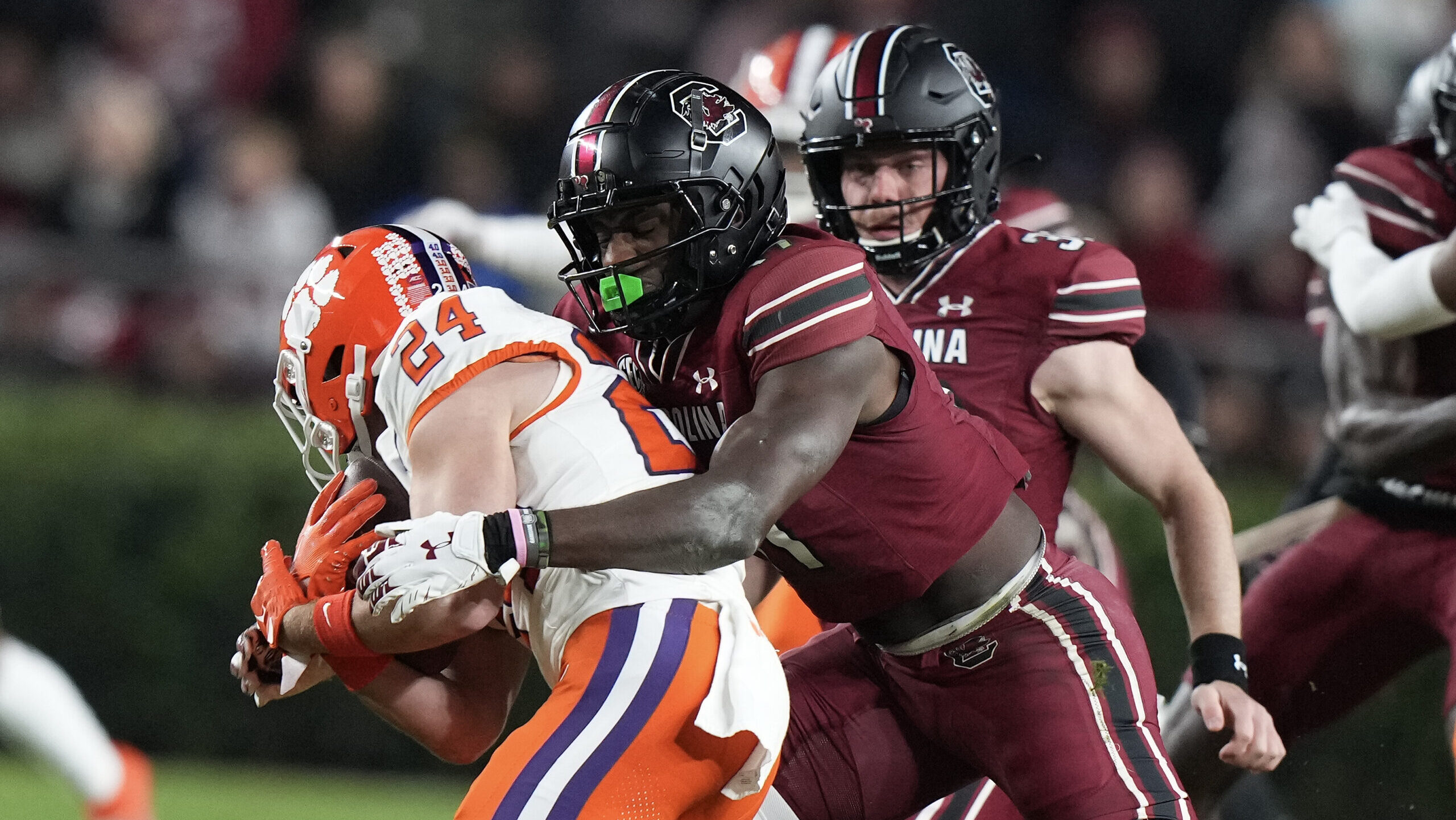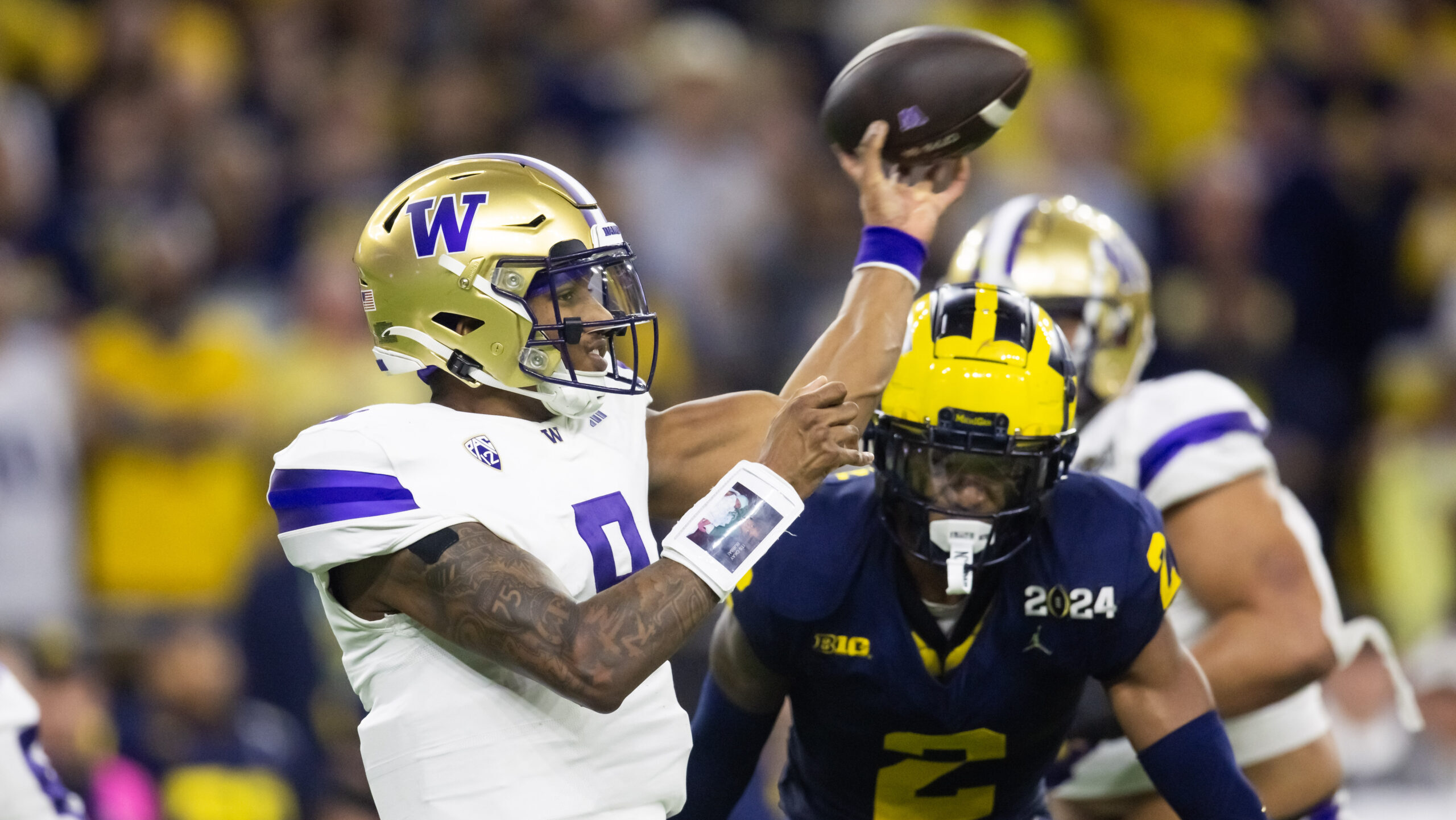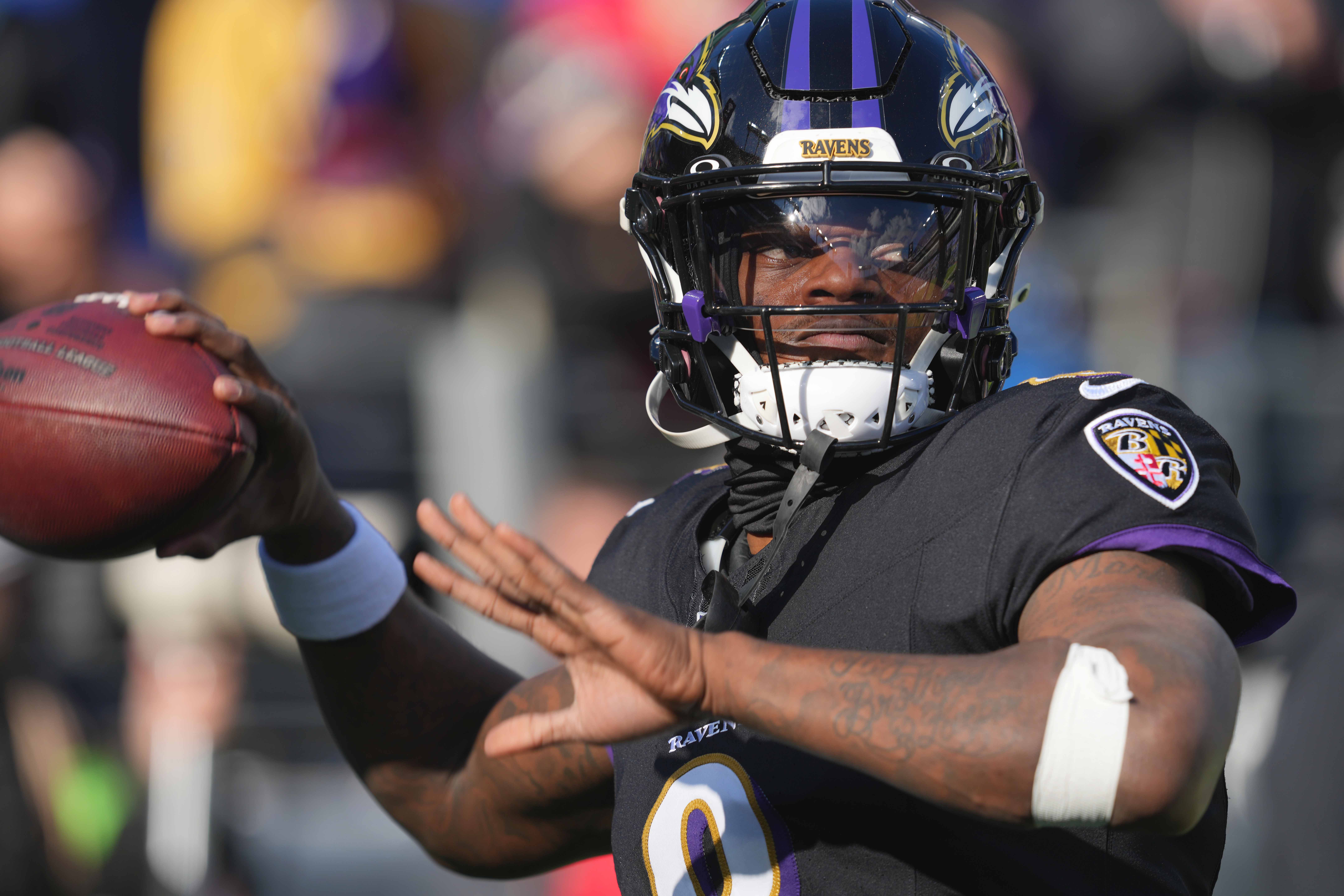Analysis
8/18/23
12 min read
2023 Fantasy Football Game Plan
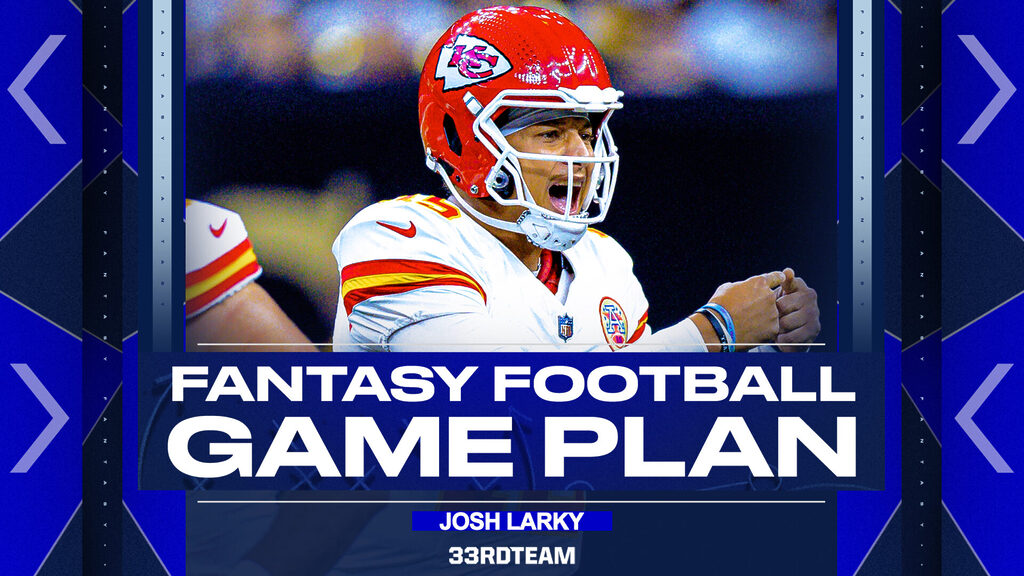
Your fantasy draft takes place this weekend, and you’re looking for some winning strategies for 2023. After spending countless hours compiling my tiered, top 160 fantasy rankings, it’s time to articulate how to apply an overarching strategy to pair with them.
This is your fantasy football game plan, the perfect companion piece for our free, downloadable PDF cheat sheet.
While it may feel great to scoop up value on draft day simply, a draft strategy is equally, if not more, important. For example: If you draft five quarterbacks because they all fell a round past ADP, your team will be hilariously bad at the other positions.
A proper draft strategy allows you to get player takes wrong and still end up with a solid starting roster, and this article will help you accomplish that.
This article will walk you through the three best strategies for fantasy drafts, along with several quick tips to help you utilize the cheat sheet more effectively. At the end of this article, you’ll see brief write-ups for a couple of players I’m targeting and fading at each position, along with several sample drafts for the three strategies through 10 rounds.
While the cheat sheet and this article are primarily intended for half-PPR and PPR (point per reception) leagues, those in standard leagues can gain value from both. For that format, just prioritize the running back position slightly more than the wide receiver one.
If you haven’t already, make sure you read through Ryan Reynolds’ top-15 fantasy defenses, along with which weeks he’s excited to play each one based on matchups.
Best Draft Strategies
There are three viable strategies for 2023: HeroRB, ZeroRB and DoubleRB.
HeroRB
Draft one running back in the early rounds, loading up on the wide receiver position early. Aim for an elite quarterback and/or an elite tight end. Running backs have high injury rates historically, and the wide receiver position is more top-heavy this year than in seasons past.
ZeroRB
This strategy is similar to the HeroRB one, except you don’t draft any running back through at least your first five or six rounds. The idea here is to develop a core that includes an elite quarterback, three or four top-15 fantasy wide receivers and an elite tight end. Later in this article, the sample drafts will show you a few running backs I’m targeting in this build. As the season plays out and injuries hit running backs, good ZeroRB fantasy managers will use the waiver wire to find starting-caliber options — such as Kenneth Walker, Rachaad White, Samaje Perine and Jamaal Williams last year.
DoubleRB
Many drafters don’t feel comfortable fading the running back position, and that’s where DoubleRB is a strong strategy. Take two running backs through your first five picks, making sure you have strong starting options there early in the season. For DoubleRB in particular, drafting several young wide receivers with upside in the middle rounds is imperative to ensure your team scores near the top of the league throughout the season.
Quick Tips
- Draft at least three wide receivers through six rounds of your fantasy draft.
- Avoid more than one early quarterback. Using the cheat sheet, you could potentially draft the “best player available” in Jalen Hurts in Round 3, followed by Lamar Jackson in Round 4. If you take Hurts — or any other quarterback in the first six or seven rounds — do not take another one for the remainder of your draft.
- Avoid more than one early tight end. Similar to with quarterbacks, if you draft a tight end such as T.J. Hockenson early, don’t take Darren Waller a few rounds later. You don’t want to put a tight end in your flex because even the higher-end fantasy tight ends are usually outscored by a couple of dozen running backs and receivers.
- Do not take more than two running backs through five rounds. This will help you draft a strong receiving corps while also getting a strong option for at least one of your quarterback or tight end slots. Taking three or four early running backs usually tanks your team.
- Load up on backup running backs in the final few rounds. Prioritize “premium handcuffs,” players who are one injury away from being the team’s three-down back and from giving you 15 fantasy points per game.
- When deciding between similar players, use age as a tiebreaker — younger players often finish better in fantasy than their older peers.
- Prioritize stacking: pairing players on the same passing offense. Any time a touchdown is scored by your stack, you get at least 10 fantasy points from touchdowns (four points passing, six points receiving). Another way to think about stacking is betting on an offense more than an individual player. If you select Keenan Allen in Round 3, Justin Herbert becomes a target in Round 4 or 5 because you think the Chargers’ passing offense will be strong. If you draft Mark Andrews in Round 3, Jackson becomes more appealing in Round 4 because you believe the Ravens will score a lot of points.
- Draft at least one rookie wide receiver in every draft. Ideally, you select one of the four rookies who went in Round 1 of the NFL Draft: Jaxon Smith-Njigba (Seahawks), Jordan Addison (Vikings), Quentin Johnston (Chargers) or Zay Flowers (Ravens). In the later rounds, target one of these four rookies who were taken in Round 2 of the recent draft: Jonathan Mingo (Panthers), Marvin Mims (Broncos), Jayden Reed (Packers) or Rashee Rice (Chiefs). Rookie wide receivers score more points as the season progresses.
- Take a flier on a Miami Dolphins running back in most drafts. It’s unclear how the pecking order will shake out, but this is one of the league’s best offenses. Draft rookie De'Von Achane or one of the two veterans, Raheem Mostert or Jeff Wilson. There’s a very good chance one of the three is highly fantasy-relevant in 2023.
If you haven’t already, make sure you join our FREE Discord. Start-sit and trade advice in-season, along with player prop betting picks, can all be found within. We will be hosting some listener leagues soon, and joining Discord is the best way to draft with Josh Larky, Ryan Reynolds or Jordan Vanek.
Players to Target
Quarterbacks
![]() Justin Herbert, Chargers
Justin Herbert, Chargers
The Los Angeles Chargers project to lead the NFL in pass attempts and Herbert is surrounded by one of the best groups of skill players in the league. The team has a top offensive line, which will give Herbert extended time to throw. He topped 22 fantasy points in 2020 and 2021 before injuries ruined his 2022 season. He is capable of surpassing his 5,014 passing yards and 38 passing touchdowns from 2021.
![]() Geno Smith, Seahawks
Geno Smith, Seahawks
Geno Smith finished the 2022 season:
- 10th in passing yards per game.
- Sixth in passing touchdowns per game.
- Eighth in rushing yards per game.
- Eighth in fantasy points per game.
The Seattle Seahawks added Smith-Njigba in Round 1 of the most recent draft, and the offensive line should be improved for 2023. Smith is a great value late in drafts.
Running Backs
![]() David Montgomery, Lions
David Montgomery, Lions
David Montgomery will play behind the best offensive line of his career in Detroit, and he has a stellar fantasy track record. He’ll split touches with 199-pound rookie Jahmyr Gibbs, who will likely command more touches through the receiving game. The much bigger Montgomery (he’s listed at 225 pounds) is in line for 250 carries, 40-50 targets and double-digit touchdowns. Montgomery is an every-week fantasy RB2 with elite upside should the undersized Gibbs get injured.
![]() Alvin Kamara, Saints
Alvin Kamara, Saints
No fantasy league is won through the first three weeks of the season — the length of Alvin Kamara’s suspension. He’s averaged at least 14 fantasy points per game all six years of his career, and the New Orleans Saints have the league’s easiest schedule.
Wide Receivers
![]() Amon-Ra St. Brown, Lions
Amon-Ra St. Brown, Lions
Amon-Ra St. Brown has averaged more than 20 PPR fantasy points per game in his last 20 healthy games. The Detroit Lions were the fifth-best scoring offense last year, but the team was more run-heavy than most. A slight change in pass rate could help St. Brown put up a season similar to Cooper Kupp’s from two seasons ago.
![]() Jerry Jeudy, Broncos
Jerry Jeudy, Broncos
Jerry Jeudy dealt with injuries throughout last season, and because he left three games really early, his fantasy stats per game were slightly underwhelming. If we remove the three games where he essentially didn’t play, he averaged 16 fantasy points per game in the remaining 12 games. The Denver Broncos scored the fewest points in the NFL last season and should be much improved with new coach Sean Payton and an offensive line that was fortified through free agency.
Tight Ends
![]() Darren Waller, Giants
Darren Waller, Giants
Waller provided at least 90 receptions and 1,145 yards in 2019 and 2020. His fantasy production from those seasons would have been TE2 last year behind only Travis Kelce. Injuries affected Waller’s 2021 and 2022 seasons, but he’s healthy again and projects as the New York Giants’ clear top option in the passing game.
![]() Tyler Higbee, Rams
Tyler Higbee, Rams
If you need a fantasy tight end late, Tyler Higbee is behind only Kupp for targets in the Los Angeles Rams’ offense. The Rams have the NFL’s worst pass defense and will need to pass early and often to remain competitive in games. Before the Rams’ offense crumbled last year and Matthew Stafford suffered an injury, Higbee was on pace for 124 targets, 82 receptions and 731 yards through the first 10 games.
Players to Fade
Quarterbacks
![]() Joe Burrow, Bengals
Joe Burrow, Bengals
Joe Burrow goes very early in fantasy drafts for a player who doesn’t run much and who also won’t be near the top of the league in pass attempts. The Cincinnati Bengals’ offense is not fast-paced, and Burrow’s calf strain will neutralize his rushing stats. He should be a sixth-round fantasy pick, but he often goes as early as Round 4. His career-high fantasy points per game from last season is lower than two of Herbert’s three seasons.
![]() Anthony Richardson, Colts
Anthony Richardson, Colts
I have outlined in depth how rookie quarterbacks struggle to score fantasy points. Only four rookies over the past 15 years have had a strong fantasy season, and the linked article illustrates why Anthony Richardson is different (in a bad way) from the four successful rookies.
Running Backs
![]() Aaron Jones, Packers
Aaron Jones, Packers
Aaron Jones only had two rushing touchdowns last year because A.J. Dillon is now the main recipient of goal-line carries. Jones should also see a downtick in receiving efficiency because Jordan Love is a steep downgrade from Aaron Rodgers. Jones is squeezed for touchdown upside, and his receiving stats should take a slight hit, too. He’s a fade in Round 3 through Round 5 of fantasy drafts.
![]() Miles Sanders, Panthers
Miles Sanders, Panthers
Miles Sanders finished 2022 with a career-high 15 carries per game on the league’s best rushing offense (the Philadelphia Eagles); he had nearly 1,300 rushing yards and 11 rushing touchdowns. Because he’s a liability in pass protection, he had a minimal receiving role and finished as only the RB16 in half-PPR and as the RB22 in full-PPR formats per game. The Carolina Panthers’ offense should be much worse than the Eagles’, and Sanders will have a tough time staying on the field to command targets because pass blocking will be prioritized with undersized first-overall pick Bryce Young at quarterback.
Wide Receivers
![]() Drake London, Falcons
Drake London, Falcons
Drake London averaged fewer than four receptions and only 37 yards per game during the 10 games he overlapped with Kyle Pitts. The Falcons drafted RB Bijan Robinson with the eighth pick in the draft, upgraded the interior of the offensive line during free agency and are sticking with Desmond Ridder at quarterback. This is a team signaling it wants to run early and often once again, and London will have a tough time getting enough receiving volume — assuming at least Pitts or Robinson stays healthy.
![]() Michael Pittman, Colts
Michael Pittman, Colts
The Indianapolis Colts attempted the eighth-most passes last season, and Michael Pittman saw 26 percent of the team’s targets. Even still, he was a low-end fantasy WR2 per game. With the move to rookie Richardson at quarterback, the Colts now project to finish in the bottom five in the NFL in passing. Richardson completed fewer than 54 percent of his passes during his final season at Florida, and Indianapolis is most likely the worst overall passing environment for a receiver to play in for 2023.
Tight Ends
![]() George Kittle, 49ers
George Kittle, 49ers
George Kittle experienced a sharp decline in every major receiving category last year aside from touchdowns. His four receptions and 51 yards per game were by far his lowest marks over the past five seasons. Removing touchdowns, he scored just nine fantasy points per game in PPR formats. He caught 11 touchdowns on only 60 receptions, and that’s an unsustainable rate. His prior career-high was six touchdown receptions, and he would have been a mid-low-end fantasy TE1 last year if not for the touchdown luck. It’s tough to see Kittle providing elite fantasy production at the position in 2023.
Sample Drafts
Below are sample lineups for each of the three main strategies through 10 rounds.
HeroRB Sample Draft
| Round | Sample Draft |
| 1 | WR Amon-Ra St. Brown |
| 2 | RB Saquon Barkley |
| 3 | WR Tee Higgins |
| 4 | QB Justin Herbert |
| 5 | WR Mike Williams |
| 6 | TE Darren Waller |
| 7 | RB Alvin Kamara |
| 8 | WR Jordan Addison |
| 9 | RB Zach Charbonnet |
| 10 | RB Samaje Perine |
ZeroRB Sample Draft
| Round | Sample Draft |
| 1 | WR Ja’Marr Chase |
| 2 | WR Chris Olave |
| 3 | WR Calvin Ridley |
| 4 | QB Lamar Jackson |
| 5 | TE T.J. Hockenson |
| 6 | RB David Montgomery |
| 7 | RB James Conner |
| 8 | WR Skyy Moore |
| 9 | RB Jamaal Williams |
| 10 | RB Jeff Wilson |
DoubleRB Sample Draft
| Round | Sample Draft |
| 1 | RB Bijan Robinson |
| 2 | RB Derrick Henry |
| 3 | WR Amari Cooper |
| 4 | RB Jahmyr Gibbs |
| 5 | WR Diontae Johnson |
| 6 | WR Brandon Aiyuk |
| 7 | QB Deshaun Watson |
| 8 | WR Quentin Johnston |
| 9 | TE Tyler Higbee |
| 10 | WR Zay Jones |
Follow Josh Larky on Twitter @JLarkyTweets.


